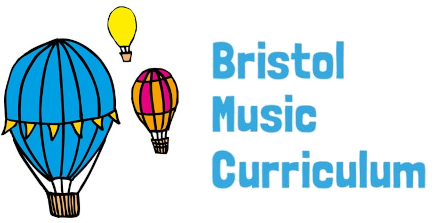Key Learning Objectives: To read and perform an extended rhythmic composition using traditional notation. I can maintain a rhythmic line and a rhythmic ostinato in an ensemble. To perform with sensitivity and with musicality. Starter activity: Rehearse each two bar rhythm using the backing tracks, focusing on correcting the reading and maintaining the pulse. Main activity: Performance […]
Tag: notation
Year 5, Unit 3: Singing – Lesson 3
Key Learning Objective: To identify, sing and perform intervals/leaps in a melody. Starter activity: Choose an activity from the Pitch and Vocal starter bank. Main activity: Listening and response activity based on the track, ‘Young Rider’. Learn the song, focusing on the shape of the melodic line, ensuring the different intervals are pitched correctly. Plenary: Give the children […]
Year 5, Unit 2: Trains – Lesson 4
Key Learning Objectives: To read and perform a rhythm from musical notation. To compose lyrics within a given meter. Starter activity: Choose one of the activities from the rhythm starter bank. Main activities: Activity one:Listening and response exercise based on the work, ‘Etude Aux Chemins de Fer’ by the French composer Pierre Schaeffer. Activity two: […]
Year 5, Unit 1: Air – Lesson 4
Key Learning Objective: To combine pitch, dynamics and tempo to create a composition. Starter activity: Listen to twenty seconds of each of the three pieces studied over the previous three weeks, asking pupils to form sentences to describe what they have heard in each using vocabulary learnt so far (pitch, tempo and dynamics.) Main activities: To […]
Year 4, Unit 2: Rhythm – Lesson 6
Key Learning Objectives: To further develop my understanding of notation. To explore texture and pulse by playing rhythms simultaneously in an ensemble. Starter activity: Select an activity from the Rhythm Card Starter Bank. Main activity: Use the Lego notation sets and the Rhythm fraction walls to allow each child to compose a four beat rhythm. Incorporate […]
Year 4, Unit 2: Rhythm – Lesson 5
Key Learning Objectives: To develop understanding of notating rhythms. To compose and notate rhythms. Starter activity: Select an activity from the Rhythm Card Starter Bank. Main activity: Create four beat phrases using the provided Lego notation sets and Rhythm fraction wall, referring to the note value chart to identify the different note lengths within the two […]
Year 4, Unit 2: Rhythm – Lesson 3
Key Learning Objectives: To explore how rhythm is used in a non-western musical tradition. To learn about strong and weak beats in Indian talas. To perform Tintal tala with increasing aural memory. To compose and perform an Indian tala inspired rhythm in an ensemble with increasing accuracy. Starter activity: Select an activity from the Rhythm […]
Year 4, Unit 2: Rhythm – Lesson 1
Key Learning Objectives: To develop understanding of reading staff notation. To explore notating rhythms. Starter activity: Select an activity from the Rhythm Starter Bank. Main activity: Listening and response exercise using the game, ‘Don’t Clap our School Back’. Use rhythm cards to sound out the Bristol place rhythms, focusing on how they are notated, culminating in the completion of […]
Year 4, Unit 1: Water – Lesson 5
Key Learning Objective: To interpret symbols as musical sounds. Additional Learning Objective: To select instruments and explore the timbre of the instruments in order to represent aspects of a storm. Starter activity: Watch the BBC Ten Pieces film for Benjamin Britten’s ‘The Storm’ from the opera ‘Peter Grimes’. Explain that the class will be using it […]
Year 4, Unit 1: Water – Lesson 4
Key Learning Objective: To interpret symbols as musical sounds. Additional Learning Objective: To select instruments and explore the timbre of the instruments in order to represent aspects of a storm. Starter activity: Watch the BBC Ten Pieces film for Benjamin Britten’s ‘The Storm’ from the opera ‘Peter Grimes’. Explain that the class will be using it […]
